Guide to Calculating Battery Charging Current and Time
Understanding how to calculate Charging Current and Time is essential for anyone working with batteries—whether you're managing off-grid solar systems, electric vehicles, or simply charging a battery at home. In this comprehensive guide, we’ll break down the formulas, influencing factors, and best practices for calculating charging parameters safely and efficiently. Getting this right not only ensures optimal battery performance but also helps prevent damage and prolongs battery life.
- Basic Concepts Behind Charging Current and Time
- Understanding the Role of Battery Capacity in Charging Current and Time
- Formula to Calculate Charging Current and Time
- Factors That Affect Charging Current and Time
- Practical Examples of Charging Current and Time Calculations
- Recommended Charging Current and Time by Battery Type
- Tips to Optimize Charging Current and Time
- Common Mistakes When Calculating Charging Current and Time
- Tools and Calculators for Charging Current and Time
- Final Thoughts on Mastering Charging Current and Time
Why Calculating Charging Current and Time Matters
Accurate calculation of Charging Current and Time ensures that batteries are charged within their safe operating limits. Overcharging or undercharging a battery can significantly reduce its lifespan or even create hazardous conditions such as overheating or fire. Additionally, understanding these parameters helps in selecting the correct charger and optimizing power consumption.
Basic Concepts Behind Charging Current and Time
Before diving into formulas, let's establish some foundational knowledge about Charging Current and Time.
What Is Charging Current?
Charging current is the rate at which electrical energy is delivered to a battery. It’s typically measured in amperes (A). This value depends on the battery's capacity and the charger's output.
What Is Charging Time?
Charging time refers to the duration it takes to fully replenish a battery from a given state of charge (SOC) to 100%. It's influenced by battery size, charging current, and charger efficiency.
Understanding the Role of Battery Capacity in Charging Current and Time
Battery capacity is one of the main variables in calculating Charging Current and Time.
Measured in Ampere-Hours (Ah)
Battery capacity is typically expressed in ampere-hours (Ah). For example, a 100Ah battery can theoretically provide 1 amp for 100 hours.
C-Rate and Its Impact
The C-rate is a key concept in battery charging. It defines the rate at which a battery is charged or discharged relative to its capacity. A 1C rate for a 100Ah battery means charging at 100A, which would theoretically fully charge the battery in 1 hour.
Formula to Calculate Charging Current and Time
Now, let’s explore the formulas used to determine Charging Current and Time accurately.
Charging Current Formula
Charging Current (A)=Battery Capacity (Ah)×C-rate
For example, for a 100Ah battery at 0.5C:
100Ah×0.5=50A
Charging Time Formula
Charging Time (hours)=
Charging Current (A)/Battery Capacity (Ah) × Efficiency/1
Factors That Affect Charging Current and Time
There are several practical variables that impact Charging Current and Time beyond just capacity and current.
Battery Chemistry
Different chemistries (Li-ion, NiMH, Lead Acid) have different safe charging limits and efficiencies.
State of Charge (SOC)
Charging slows as the battery nears full capacity due to reduced current flow in constant-voltage phases.
Charger Specifications
Voltage, amperage, and smart features in your charger influence how fast and safely it charges.
Temperature
High or low temperatures can drastically affect charging behavior and must be factored in.
Practical Examples of Charging Current and Time Calculations
Let’s go through real-world examples to further solidify your understanding of Charging Current and Time.
Example 1: Charging a 12V 100Ah Lead-Acid Battery
Battery: 100Ah
Charging Current: 20A (0.2C recommended for lead-acid)
Efficiency: 80%
Example 2: Charging a 48V 50Ah Lithium Battery
Battery: 50Ah
Charging Current: 25A (0.5C is safe for most lithium batteries)
Efficiency: 95%
Recommended Charging Current and Time by Battery Type
Different batteries require different charging rates. Understanding these helps optimize Charging Current and Time.
Lead-Acid Batteries
Typical charging current: 0.1C to 0.3C
Charging time: 6–12 hours
Efficiency: ~80%
Lithium-Ion Batteries
Typical charging current: 0.5C to 1C
Charging time: 1–3 hours
Efficiency: ~95%
Nickel-Metal Hydride (NiMH)
Typical charging current: 0.5C
Charging time: 2–4 hours
Efficiency: ~90%
Tips to Optimize Charging Current and Time
Improving the efficiency of your battery charging process means optimizing Charging Current and Time with smart strategies.
Use a Smart Charger
Smart chargers regulate current and voltage based on battery state, which reduces time and improves safety.
Avoid Overcharging
Install Battery Management Systems (BMS) to prevent excessive charging currents.
Monitor Temperature
Charge in a temperature-controlled environment to maintain battery performance.
Maintain Clean Connections
Corroded terminals can reduce current flow and increase charging time.
Common Mistakes When Calculating Charging Current and Time
Even seasoned professionals make errors in estimating Charging Current and Time.
Ignoring Efficiency Losses
Always include charger efficiency in your time calculations. Ignoring this leads to underestimated times.
Using Generic C-Rates
Defaulting to 1C without checking manufacturer guidelines can be dangerous.
Not Factoring in SOC
A half-full battery charges quicker than a nearly full one; charging slows near the top.
Tools and Calculators for Charging Current and Time
There are several online and physical tools that simplify the process of calculating Charging Current and Time.
Online Calculators
Web-based calculators allow quick computation with battery size, current, and efficiency inputs.
Mobile Apps
Apps like Battery University and DIY Solar Tools offer instant results and tracking.
Multimeters and Power Meters
For physical measurements, tools like clamp meters can help assess actual charging current.
Final Thoughts on Mastering Charging Current and Time
Mastering the calculation of Charging Current and Time empowers users to safely and efficiently manage battery systems. Whether you're powering a solar setup, maintaining a golf cart, or building an EV, understanding these parameters is key to performance and longevity.
With the knowledge shared in this guide, you now have the tools to accurately estimate charging durations, select appropriate chargers, and make better decisions about battery care.
Charging Current and Time remains one of the most critical yet often overlooked aspects of battery technology. By applying proper formulas, understanding influencing factors, and avoiding common pitfalls, you can ensure safer and faster charging every time.

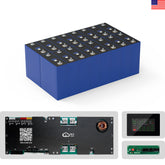



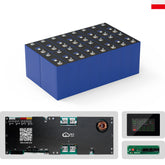



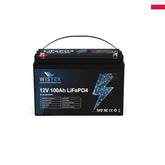



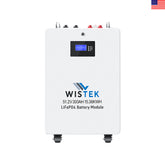
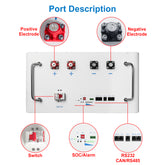
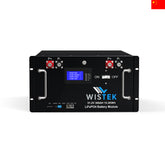
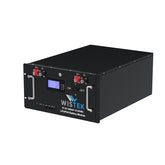


Leave a comment
All blog comments are checked prior to publishing